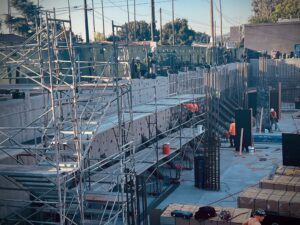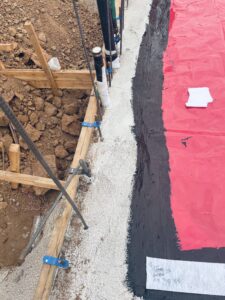The La Brea Tar Pits in Los Angeles, California, have captivated scientists and visitors for centuries. This unique geological phenomenon has preserved the remains of countless Pleistocene-era animals and served as a scientific research hub. This article will delve into the history of the La Brea Tar Pits. Exploring topics such as the Pleistocene era, seepage from fissures in the Earth’s crust, the first explorer and excavator, and its transformation into a scientific research hub.
The Pleistocene Era
To understand the significance of the La Brea Tar Pits, we must first explore the Pleistocene era. This geological epoch began approximately 2.6 million years ago. It ended 11,700 years ago and was characterized by repeated glaciations and interglacial periods. During this time, the Earth experienced diverse flora and fauna, including iconic megafauna such as mammoths, saber-toothed cats, and dire wolves.
Seepage from Fissures in the Earth’s Crust
The La Brea Tar Pits owe their existence to seepage from fissures in the Earth’s crust. These fissures, formed by tectonic activity, allowed petroleum to rise to the surface. Over time, the lighter petroleum components evaporated, leaving a sticky, asphalt-like substance known as tar. This tar, combined with water and other materials, formed today’s pits.
The First Explorer and Excavator
The first explorer to stumble upon the La Brea Tar Pits is believed to be a Spanish soldier named Gaspar de Portolá, who led an expedition in 1769. However, it was not until the late 19th century that scientific interest in the tar pits began to grow. In 1875, William Denton, a professor of geology, visited the area and recognized its scientific potential. Denton’s observations laid the groundwork for future excavations and research.
The transformation into a Scientific Research Hub
In the early 20th century, the La Brea Tar Pits transformed from a curiosity to a scientific research hub. In 1913, the LA County Museum of Natural History established a laboratory and began systematic excavations. The museum’s first director, William Orcutt, recognized the importance of the tar pits as a window into the past and actively promoted their study. Over the years, numerous excavations have taken place at the La Brea Tar Pits, unearthing an astonishing number of fossils. The most common finds include the remains of dire wolves, saber-toothed cats, and giant sloths. These fossils provide valuable insights into the ecology and behavior of the Pleistocene megafauna.

Scientific Research and Discoveries
The research conducted at the La Brea Tar Pits has yielded significant discoveries. For example, the abundance of dire wolf remains has allowed scientists to reconstruct the evolutionary history of this iconic species. Similarly, the study of saber-toothed cats has shed light on their hunting strategies and interactions with other species. Recently, technological advancements have further enhanced our understanding of the La Brea Tar Pits. Additionally, DNA analysis has revealed the genetic makeup of various Pleistocene animals, while stable isotope analysis has provided insights into their diets and migration patterns. Thus, scientific breakthroughs continue to shape our understanding of the Pleistocene era and its inhabitants.
Conclusion
The La Brea Tar Pits stand as a testament to the Earth’s geological history and the wonders it holds. From the seepage of tar from fissures in the Earth’s crust to the first explorers and excavators, the tar pits have captured the imagination of scientists and visitors for centuries. Today, it serves as a scientific research hub, offering invaluable insights into the Pleistocene era and its magnificent megafauna. As we continue to explore and study this unique site, we can only imagine what discoveries lie beneath the surface, to be unearthed.

